How to Move the Taskbar on a Windows Computer
The Taskbar is one of the most distinct and useful features of the Windows Operating System. The Taskbar is an information bar located, by default, at the bottom of the screen of a Windows computer that houses the Start Menu button, has icons for every single application running at any given time which can be used to switch between applications, is home to the notification area and the system tray, and also displays the time and date. The Taskbar is a huge help to Windows users and has been a constant through all of the many revamps and makeovers that Windows has had over the years and every single new iteration of the Windows Operating System that has come out ever since the days of Windows 98.
While the Taskbar is, by default, located at the very bottom of a Windows computer’s screen, some users often want to have their Taskbars in other positions or in different corners of their screens. When it comes to something on your computer that you’re going to be seeing no matter what program or application you are in, you should at least have the ability to decide what part of your screen you see it on – and you do!
The exact procedure you need to go through to move the Taskbar from its default position at the bottom of your screen to another location depends on the version of Windows you have installed on your computer. However, before you can actually move the Taskbar to a new corner of your screen, regardless of what version of Windows you have, you need to:
- Right-click on an empty space on your computer’s Taskbar.
- Make sure that the Lock the taskbar option is unchecked and disabled – if this option is checked and enabled, you will not be able to move the Taskbar from its default position.
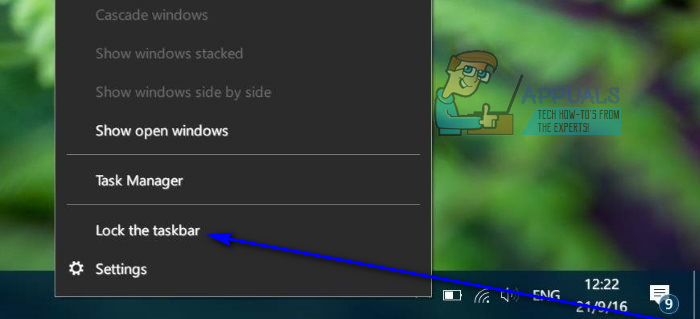
Once you’ve made sure that you are capable of moving your Taskbar, you can go ahead and actually move it. To move the Taskbar from its default location, here’s what you need to do:
On Windows 8 and Windows 10
- Right-click on an empty space on your computer’s Taskbar.
- Click on Properties in the resulting context menu.
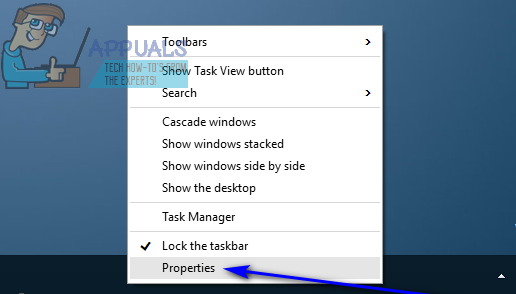
- In the Taskbar tab of the Taskbar and Start Menu Properties dialog box, open the dropdown menu located directly beside the Taskbar location on screen: option.
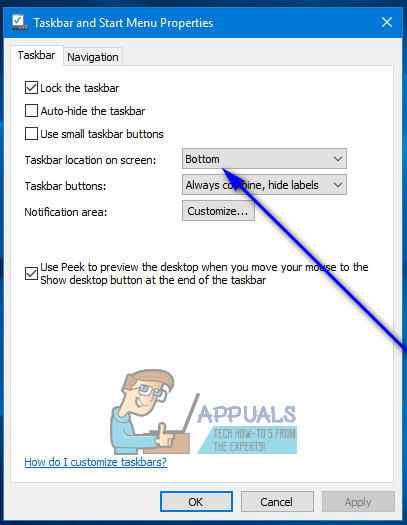
- Click on Right, Left or Top (depending on which corner of your computer screen you want your Taskbar moved to) to select it. The remaining option in the dropdown menu – Bottom – is the default location of your Taskbar.
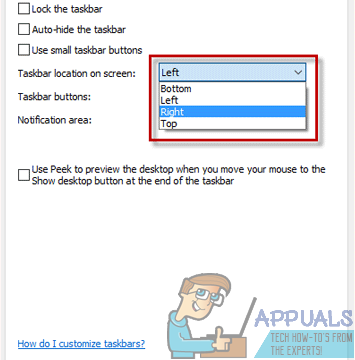
- Click on Apply and then on OK. Your Taskbar will be moved to the new location as soon as you do so.
If you have moved your Taskbar and would like it back in its original position, all you need to do is repeat steps 1–5 from the process above, but this time, in step 4, click on and select Bottom in the dropdown menu located directly beside the Taskbar location on screen: option.
On older versions of the Windows Operating System
- Left-click on an empty space on your computer’s Taskbar.

- With the click still held, move your mouse to whichever corner of your screen you want your Taskbar to be moved to, basically dragging it to that specific corner, and the Taskbar will be moved there.
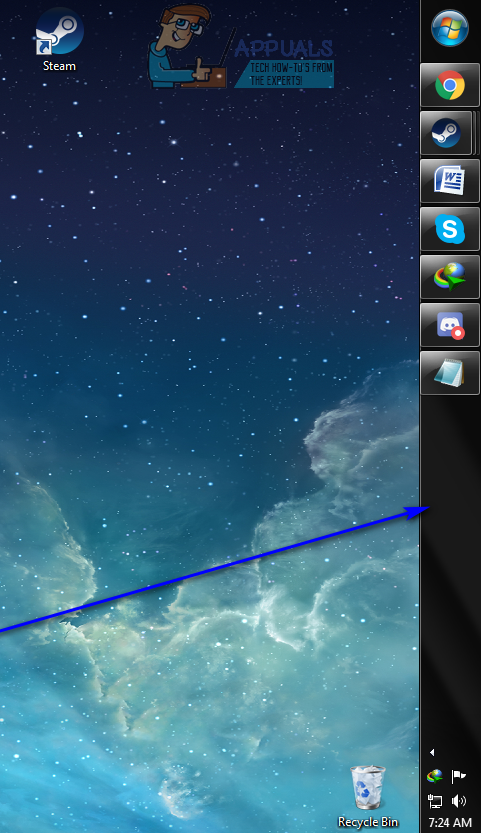
- Once your Taskbar has been moved to its new location, let go of the click.
If you have moved your Taskbar and would like it back in its original position, all you need to do is repeat the process listed and described above, but this time drag your Taskbar to the bottom of your screen – the default position of the Taskbar on all versions of the Windows Operating System.
Note: The process listed and described above works on every single version of the Windows Operating System that was developed and released before Windows 8 came into being – this means that the process holds true for all iterations of Windows 7, Windows Vista, Windows XP and even Windows 98.





